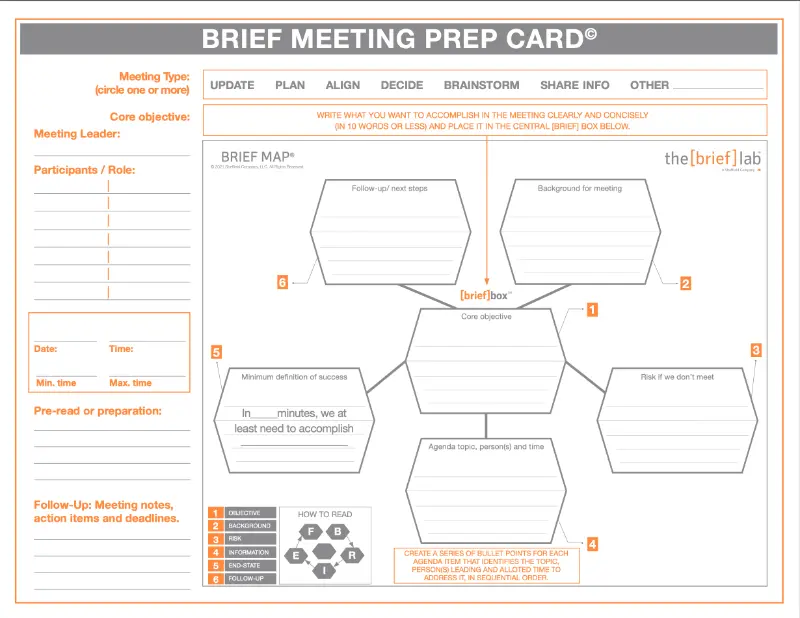
Progress reports and team updates should be positive and productive. So why do we constantly hear from managers that they’re one of the most painful parts of their week?
They’re missing the point but so are you
Recently, I met an executive recruiter who admitted that his weekly team check-ins are agonizing and long. He has more than a dozen direct reports, and each update can take anywhere from 30 minutes to 1 hour each. There’s a lot to talk about. But he’s spending nearly one day of his week just to find out what’s going on with his team. Ouch!
“The issue I have with team updates is that they confuse activity with specific results,” he complained. “I’m on tons of conference calls searching for signs of progress and all I hear is how hard they’re working. It leaves me feeling full but somehow empty handed.”
It can often feel like panning for gold. Unless your team starts to bring you those gold nuggets, you’ll waste a lot of time and frustration sifting through the sand. Managers really need their reports to get to the punch line and skip the tedious build up. What’s more, the signs of progress need to be communicated concisely so decisions can be made quickly.
Huge issue, quick fix
Ironically, this is one of the biggest issues – and time wasters – facing busy leaders today. But it’s also one of the easiest, and fastest to remedy. Here are the two basic mistakes professionals make:
1. There’s no clear headline up front. Imagine reading a newspaper without any headlines. It would be incredibly frustrating because you wouldn’t have a clue what the articles are about. Same thing with an update. Every manager wants the point up front. People sometimes think that an update itself is the point, and it’s not. Leaders need it up front, not towards the end (e.g. I’m behind on the project but I have a plan to catch up; my sales forecast is ahead of plan; there’s an issue with customer satisfaction that needs immediate attention; etc.)
2. It feels like one long run-on sentence. When you’re not prepared, you speak in a stream of consciousness and it’s very hard for managers to follow. Flagging – or counting out the points you plan to make – is a powerful and easy way to hold someone’s attention. It’s like a table of contents in your progress report to keep everyone on track. If there are four key topics that need to be covered, then say that to your boss. Start with your headline and then say “there are four things I’d like to discuss.” When you flag, make sure you’re consistent. “The first thing is…the second…the third” and so on.
Team updates should focus on results
One of my clients uses a daily huddle to get updates and doesn’t tolerate long-winded progress reports. If there’s nothing to report, she prefers to hear NSTR, or nothing significant to report. It keeps her team laser focused on work that leads to tangible outcomes instead of work for work’s sake.
Check out an article from military leader Rich Gross on how to foster an “NSTR mindset.”
So how do you know if your progress reports are effective or just a stream of consciousness that misses the mark?

Here are a few telltale signs:
• Specific. Can information be easily be substantiated?
• Organized. Is it easy to follow and always conclusive?
• Brief. Does it last too long or hit the key points quickly.
• Straightforward. Does it require lots of set up and clarifying questions?
• Memorable. Is it easy to recall an hour or even a day later?
Busy executives need progress reports and team updates to be brief. But they also need them to be results driven. There’s no sense in wasting energy trying to portray activity and depict it as an accomplishment. The good news is that you can give your team a simple set of tools to change the way you do team updates and progress reports.

A simple step to get started
I’d like to offer you 2 free BRIEF video lessons to help you stop wasting time with long, unclear team updates. Signup by clicking the image on the right or click here. It’s free!
About the author: Joe McCormack is on a mission to help progressive organizations master concise communication. Joe works with fortune 500 companies and elite special operations units, is the founder of The Brief Lab and author of Brief: Make a Bigger Impact by Saying Less. Follow us on Twitter @TheBriefLab

